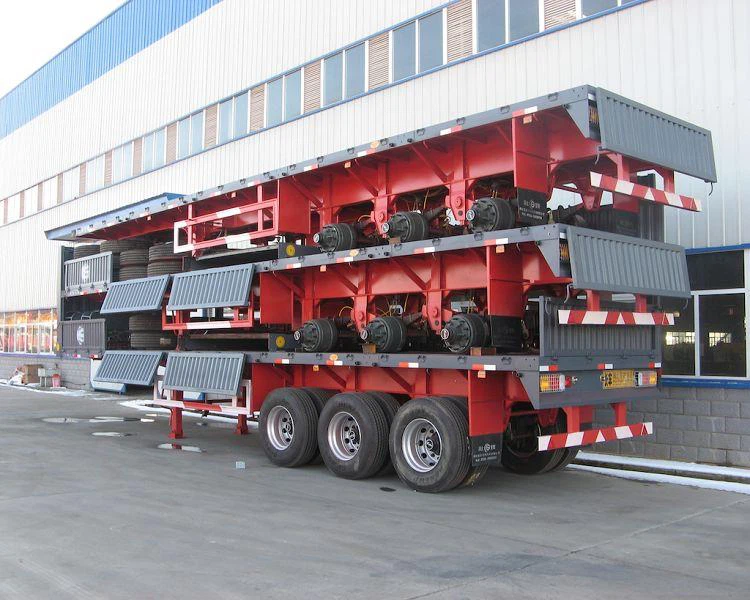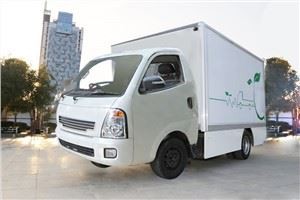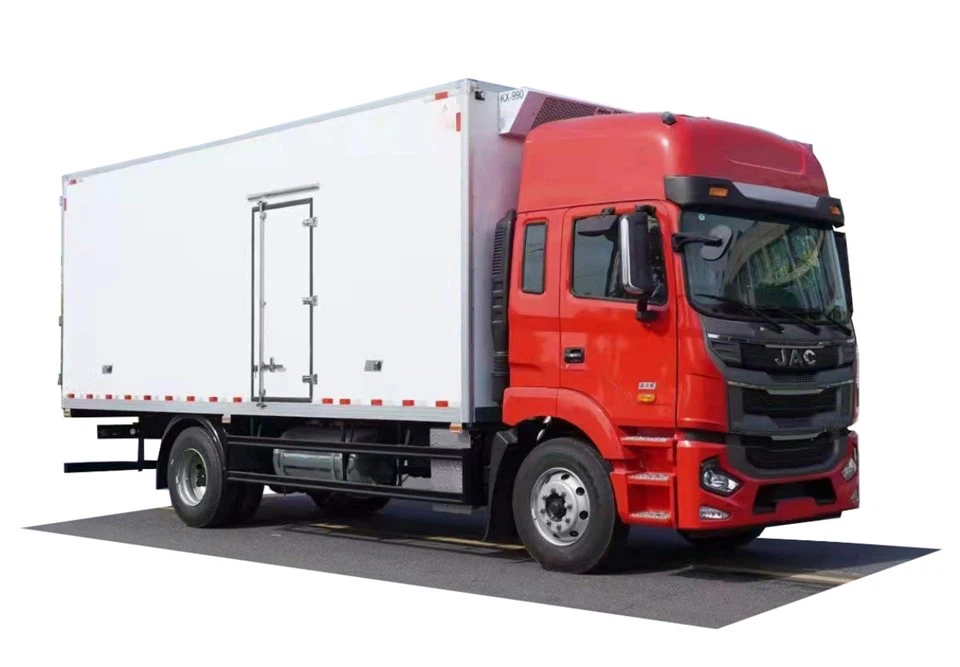Comprehensive Guide to Front Loader Trash Trucks

Introduction
Front loader trash trucks are essential vehicles in waste management, designed to efficiently pick up and transport large volumes of trash, particularly in commercial and industrial settings. Their robust structure and specialized mechanics enable them to handle heavy loads with ease, making them a preferred choice in urban environments where space and time are valuable. This article aims to provide a detailed overview of front loader trash trucks, detailing their features, advantages, operational mechanics, types, and best practices for usage and maintenance.
What is a Front Loader Trash Truck?
A front loader trash truck is a heavy-duty vehicle equipped with a hydraulic lifting mechanism at the front. This design allows the truck to pick up large bins or dumpsters, lift them, and empty their contents into the truck’s compaction area. The ability to efficiently handle bulky waste makes front loader trucks ideal for both commercial applications and residential waste collection in some cases.
Key Features of Front Loader Trash Trucks
- Hydraulic System: A powerful hydraulic mechanism that allows for efficient lifting and dumping of waste containers.
- Compaction Mechanism: The truck often includes a compactor that compresses waste to maximize space and reduce transportation costs.
- Large Capacity: Typically designed to hold several tons of waste, making them suitable for high-volume collection.
- Ergonomic Design: The operator’s cab is strategically positioned to allow the driver to see the operation clearly, enhancing safety during loading.
How Do Front Loader Trash Trucks Operate?
The operation of a front loader trash truck involves a series of steps that ensure efficient waste collection. Understanding this process is crucial for operators and fleet managers.
1. Approach and Positioning
The driver approaches the waste container, positioning the truck in front of it to facilitate an easy lift.
2. Lifting the Container
Using the hydraulic system, the operator engages the lifting arms to hook onto the container. The arms then lift the container off the ground.
3. Dumping the Waste
Once lifted, the container is tipped over, allowing waste to fall into the truck body. The compaction mechanism may engage to compress the waste further.
4. Secure the Load
After emptying, the container is placed back on the ground, and the truck’s compaction system ensures that the load is secure during transit.
Types of Front Loader Trash Trucks
Front loader trash trucks come in different models and configurations to cater to various waste management needs.
1. Standard Front Loader Trucks
These are the most common type, suited for general commercial waste collection. They come with various load capacities, typically ranging from 15 to 30 cubic yards.
2. Heavy-Duty Front Loader Trucks
Designed for industrial applications, these trucks can handle larger loads and are equipped with more powerful hydraulic systems.
| Type | Capacity | Use Case |
|---|---|---|
| Standard Front Loader | 15-30 cubic yards | Commercial waste collection |
| Heavy-Duty Front Loader | 30+ cubic yards | Industrial waste handling |
3. Smaller Front Loader Models
These models are used in urban areas where space is limited, and they tend to have a lower capacity but retain the core functionalities of larger models.
Advantages of Using Front Loader Trash Trucks
Businesses and municipalities face numerous choices when selecting a waste collection method, and front loader trash trucks offer some unique advantages:
1. Efficiency in Waste Collection
Front loader trucks are designed for speed, reducing the time spent on each pickup and allowing operators to cover more ground in less time.
2. Space Optimization
These trucks can handle larger containers, meaning fewer trips to the landfill and lower overall transportation emissions.
3. Safety Features
Modern front loaders come equipped with safety features, reducing the risk of accidents during waste collection.
Best Practices for Operating Front Loader Trash Trucks
To ensure safe and efficient operations, it’s crucial for operators to follow best practices when using front loader trash trucks.
1. Regular Maintenance Checks
Routine checks on the hydraulic system, compaction mechanism, and safety features should be conducted to ensure optimal functioning.
2. Training for Operators
Invest in comprehensive training for truck operators, focusing on safe driving, operational techniques, and equipment care.
3. Adherence to Safety Protocols
Operators should always follow safety protocols, including wearing appropriate personal protective equipment (PPE) when on the job.
Environmental Impact of Front Loader Trash Trucks
The environmental impact of waste collection vehicles, including front loader trash trucks, can be significant. However, advancements in technology and operational practices aim to mitigate negative effects.
1. Reduced Carbon Emissions
Many modern front loader trucks are designed with fuel efficiency in mind, helping reduce overall carbon footprints during waste collection.
2. Waste Compaction Benefits
By compacting waste, front loader trucks minimize the volume that needs to be transported, leading to fewer trips and reduced emissions.
Choosing the Right Front Loader Trash Truck
Selecting the most suitable front loader trash truck requires a thoughtful analysis of operational needs, environmental considerations, and financial implications.
1. Assessing Volume Needs

Businesses should evaluate their waste volume and pick a truck that meets their capacity requirements. A larger truck will usually be more cost-effective for high-volume operations.
2. Evaluating Local Regulations

Each municipality may have specific regulations regarding waste collection practices. Ensure that the chosen truck complies with local laws.
Cost Considerations When Owning Front Loader Trash Trucks
Understanding the costs associated with owning and operating front loader trash trucks is essential for any business or municipality.

1. Purchase Costs
The upfront cost of a new front loader trash truck can be significant, typically ranging from $100,000 to $300,000 depending on the model and features.
2. Maintenance and Repair Costs
Regular maintenance will add to the total ownership cost. Budgeting for these expenses is essential for long-term sustainability.
3. Fuel Efficiency
Fuel consumption is a major operational expense. Investing in a fuel-efficient model can lead to considerable savings over time.
FAQ Section
What types of waste can be collected using front loader trash trucks?
Front loader trash trucks are commonly used to collect commercial waste, industrial waste, and residential trash in specific areas. They can accommodate a wide variety of refuse types, including food waste, recyclables, and bulky items.
How often should front loader trash trucks be serviced?
Regular maintenance checks should be performed at least quarterly, but it’s advisable to have monthly inspections for high-usage vehicles. This includes checking the hydraulic system, brakes, and general wear and tear.
What is the average lifespan of a front loader trash truck?
The average lifespan of a front loader trash truck is typically between 10 to 15 years, depending on usage, maintenance, and operating conditions.
Can I rent a front loader trash truck?
Yes, many equipment rental companies offer front loader trash trucks for short-term use, which is a cost-effective option for businesses needing temporary solutions.
How does a front loader compare to rear loader trash trucks?
Front loader trash trucks are designed to collect waste from large containers placed in front of the truck, allowing for faster operations. Rear loader trucks are equipped with mechanisms to collect smaller bins from behind, often requiring more time and space for maneuvering.
What factors should influence my choice of a front loader truck model?
When choosing a front loader truck, consider factors such as waste volume, types of materials collected, local regulations, budget constraints, and desired features (such as advanced safety systems or increased fuel efficiency).
